
THE LIVERPOOL CONNECTION
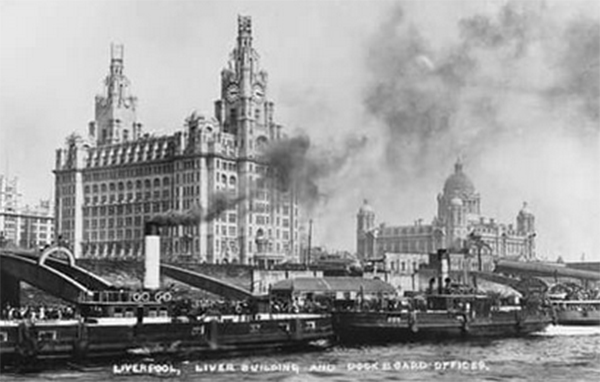
Liverpool is well known for being the site of the oldest Chinatown in Europe. However, the largest influx of Chinese was neither the early settlers of the mid-1800s, nor the seamen from the Second World War, but rather the Chinese Labour Corps from the Great War. Between May 1917 and April 1918, soon after these men were recruited, 27 transport ships arrived at Liverpool. Between them, they carried 65,000 Chinese labourers - in other words, over two thirds of the total Chinese workforce recruited by the British Army.
Fearing attacks by German U-boats in the Mediterranean, these later contingents followed a safer, but more circuitous, route than those of the French: by ship across the Pacific, overland by train from Vancouver on the west coast of Canada to Halifax on the east coast, by ship to Liverpool, on to the south-east coast and, from there, again by ship to one of the ports of northern France.
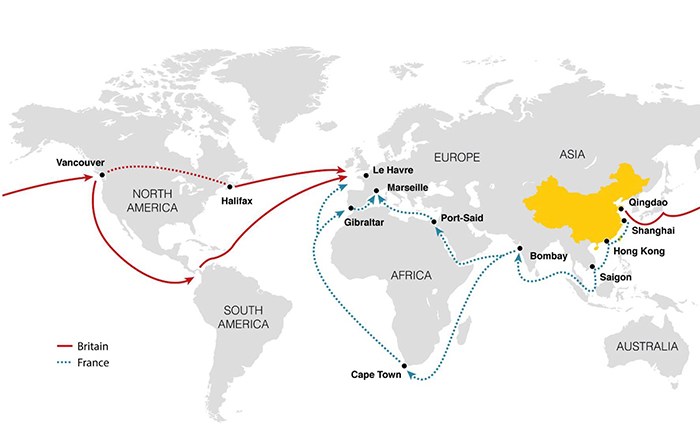
| The connection with Liverpool was not only a strategic one; there was another important historical link. The CLC was under the general command of Lt.-Col. Bryan Clarke Fairfax of the King’s Liverpool Regiment. Fairfax had previously done service in China as a lieutenant in the 1st Chinese Regiment during the Boxer Uprising of 1900. His experience of China and the Chinese made him perfect for the appointment; moreover, he had developed an affinity for those who had served under him. | 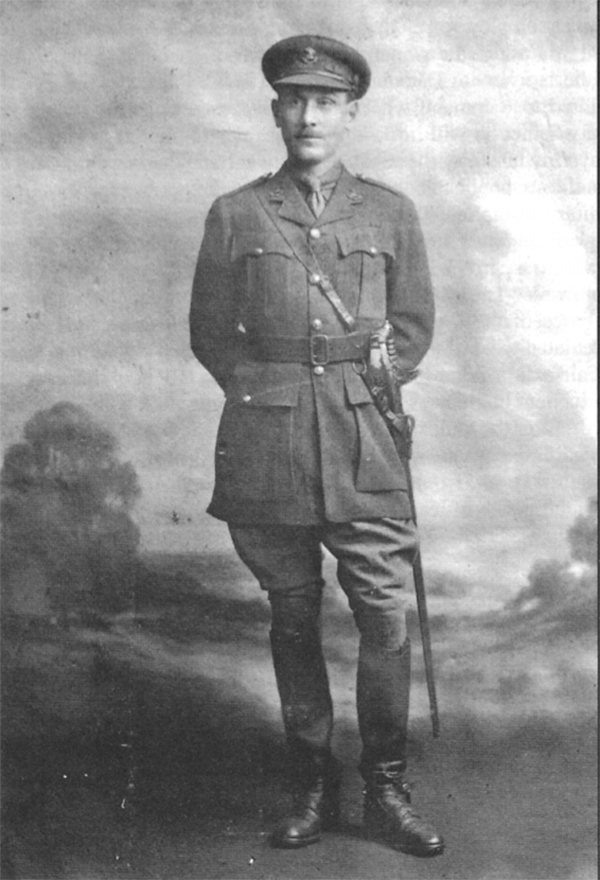 |
The 1st Chinese Regiment was stationed in Weihaiwei, on the northeastern tip of the Shandong Peninsula, and it was here that the earlier cohorts were recruited and trained for the Chinese Labour Corps before setting sail for Europe.
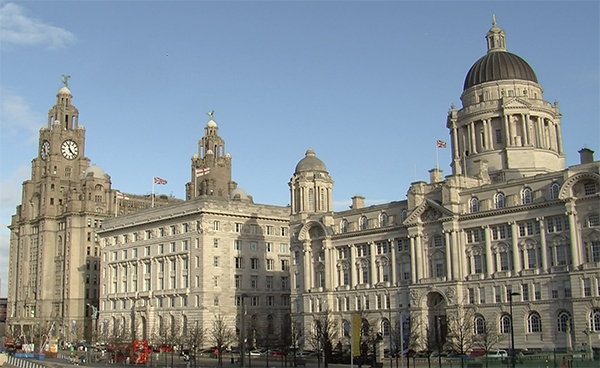 |
The great port city of Liverpool, with its Three Graces towering above the dockside, must have been an impressive sight. This, coupled with the noisy announcement of their arrival, would have caused quite a stir amongst passengers and onlookers alike.
|
Chinese labourer Sun Gan describes the event in his diary thus:‘On the afternoon of 7th September, one of the Englishmen held up a string of firecrackers and said: “Our ship has made a safe arrival, so it must mean you Chinese are bringers of good fortune.” Then the firecrackers were set alight and made a tremendous sound.’

Sun Gan: Diary of a Chinese Labourer, Entry no.31
The labourers’ sojourn in Liverpool was short; no sooner had they arrived than they had to move again, this time, to south-east England to board more ships destined for France. (Sun Gan mentions that, in Liverpool, the men stayed on board for thirteen days before being put onto a train for Dover.) However, a good number of them were hospitalised in the city. At Belmont Road Military Hospital in Anfield, 150 men were treated, many of them for mumps. They were isolated in a whole block under the care of Dr Bradshaw who was in charge of infection cases. According to a local newspaper:
(The Liverpool Courier, 28th October 1919)
CLC members buried at Anfield Cemetery
CLC no. 7434 Guo Jingshan, d. 6th June 1917, aged 26, at Port Sanitary Hospital, of pulmonary tuberculosis
CLC no. 34559 Sun Chensheng, d. 3rd September 1917, aged 22, at Belmont Road Hospital, of dysentery and syncope
CLC no. 70062 Fan Chuansheng, d. 25th January 1918, aged 30, at 1st Western General Hospital, Fazakerley, of diarrhoea
CLC no. 134274 Guo Dexiang, from Linqu County, Shandong Province, d. 6th July 1918, at Belmont Road Hospital, of rheumatic fever
CLC no. 131474 Liu Fengxiang, from Anqiu County, Shandong Province, d. 9th August 1918, at Belmont Auxiliary Hospital, of gastritis
Commemoration Service on 10th August 2018 at Anfield Cemetery
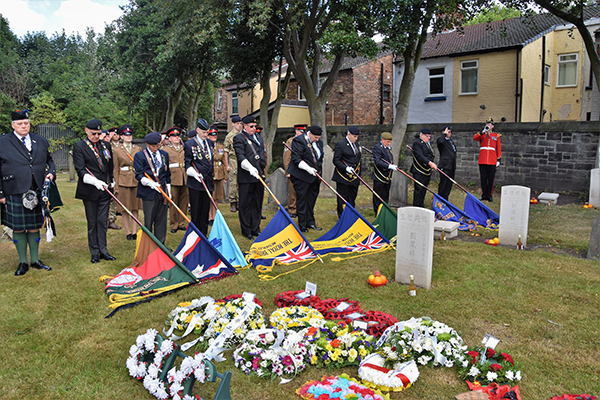
The five labourers buried in Anfield Cemetery were remembered at a ceremony jointly organised by The Meridian Society and Friends of Anfield Cemetery on 10th August 2018.
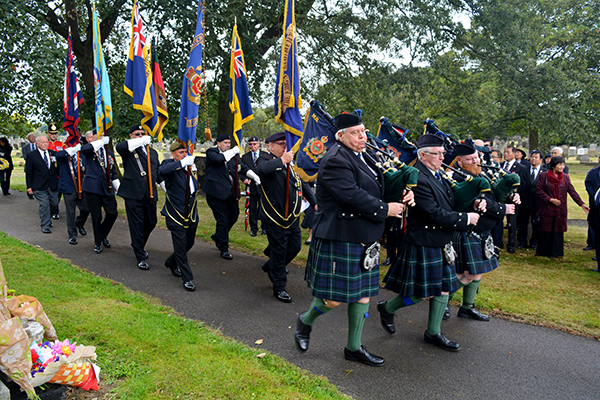 |
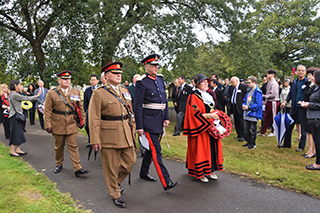 |
The Chinese communities came out in full force and paraded with troops from the Duke of Lancaster’s Regiment (of which the King’s Liverpool Regiment was a predecessor) and the Royal Logistic Corps (responsible for all CLC operations during the war) to the pipes of the Liverpool Scottish Regimental Association.

This was not the first time the CLC were commemorated, as Liverpool’s various Chinese communities have been paying their respects to these five men during their annual visits to the cemetery at Qingming Festival, the day when the Chinese traditionally sweep the tombs of their ancestors.

At the five CLC graves, they were joined by representatives of schools, groups, societies and institutions that have hosted The Meridian Society’s activities in the city.
| On this occasion, Karen Soo, granddaughter of Soo Yuen Yi (recruited by the French, but who later came to Britain to seek his fortune) and Mrs Jane McCall (granddaughter of Dr E. R. Wheeler, who is featured in our oral history film Forgotten Faces of the Great War) placed a CLC wreath with our Society Secretary, Francis Moll, before the graves. | 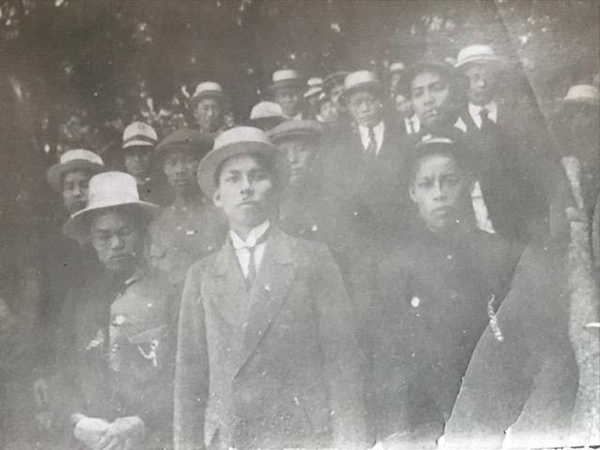 Soo Yuen Yi (centre, front) |
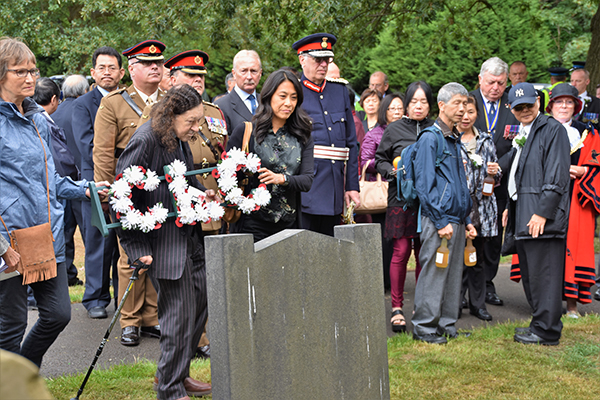
We were honoured to have the presence of HM Lord-Lieutenant of Merseyside Mr Mark Blundell, who spoke of his own grandfather’s short association with the CLC in France, the Lord Mayor of Liverpool Cllr. Christine Banks and Brigadier Peter Rafferty of the Duke of Lancaster’s Regiment, who explained the appointment of Lt. Col. Bryan Fairfax as commander of the CLC.
CLICK on the links below to read the speeches from the ceremony.
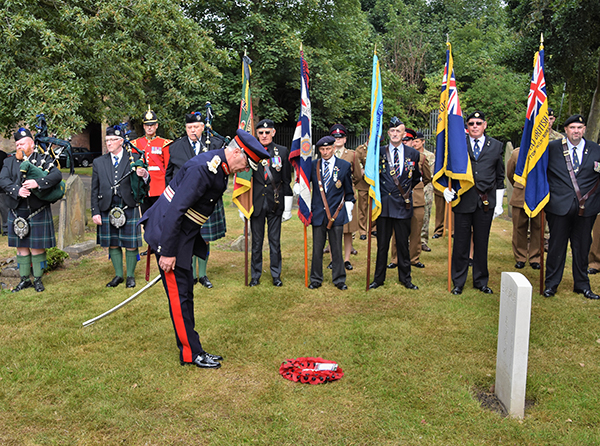
Speech by HM Lord-Lieutenant of Merseyside, Mr. Mark Blundell
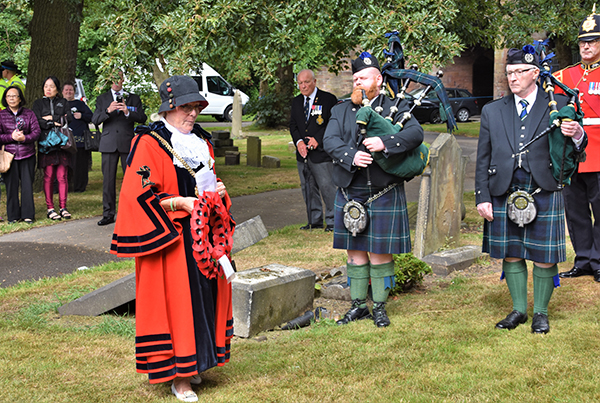
Speech by the Lord Mayor of Liverpool, Cllr. Christine Banks
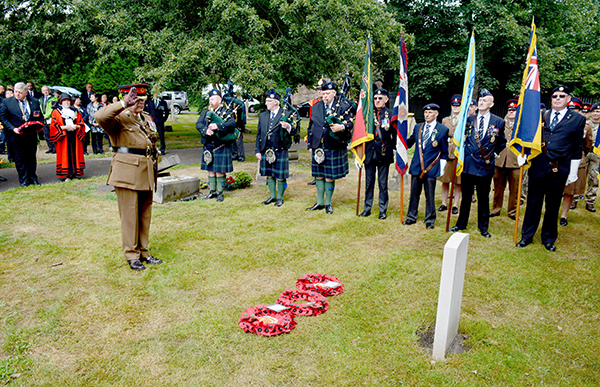
Speech by Brigadier Peter Rafferty, The Duke of Lancaster’s Regiment

Speech by Tom Bradburn, Friends of Anfield Cemetry

A notice board with a brief history of the CLC has been erected near the graves by Friends of Anfield Cemetery through a HLF project of their own.
Members of the group, including their youngest recruit, help to clean up the headstones before our commemoration ceremony.
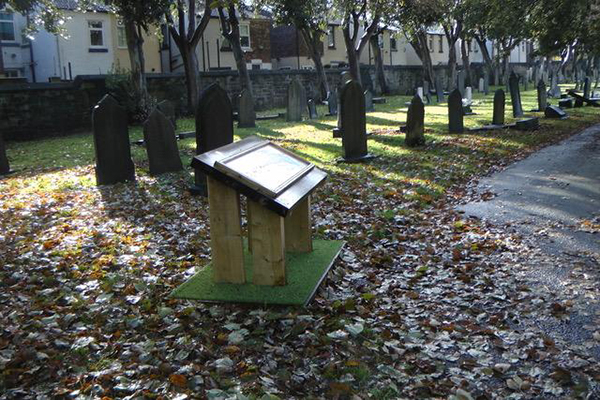


Photos courtesy of: Ray Beeton, Tom Bradburn, Hi Ching, Paul Frost, James O'Hanlon, Peng Wenlan, Karen Soo and Qi Dezhi.

